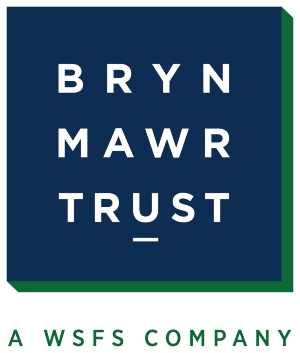Year-End Tax Planning Checklist: Steps to Maximize Your Financial Plan

Before the year comes to a close, there are some things you should review and consider with your overall financial plan. This past year has brought challenges such as inflation and a weak market performance, and with rising interest rates and new legislation now may be the best time to make adjustments before 2022 ends.
Use this checklist for potential strategies to consider.
- Roth Conversions: Deadline Dec. 31 (Not tax filing deadline)
Current tax rates are still low, so by converting your traditional IRA to a Roth IRA, you may be buying future growth at today’s tax rates. Also, the current depressed valuations in the stock market may lower the overall tax bite while allowing future growth to continue tax-free. Lastly, converting traditional IRAs to Roth IRAs removes future obligations for required minimum distributions at age 72 (unless Roth 401(k)). This can allow for further years of tax-free compounding.[1]
Also, don’t forget to confirm beneficiaries are up to date and align with your overall planning.
- Tax Loss Harvesting: Deadline Harvest Capital Losses by 12/31
The tax code permits the unlimited offset of capital gains against capital losses and to the extent there are excess losses, there is an income tax deduction of up to $3,000 that can be used against ordinary income. In addition, the tax code permits capital loss carry-forwards that can be used to offset future years’ capital gains.[2]
- Charitable Planning: For IRA holders, a Qualified Charitable Distribution (QCD) can be a great way to give to your favorite charity (qualified as a 501(c)(3) organization). If you are age 70½ and hold a Traditional IRA, you can direct distribution for your IRA to be made directly to the charity. The distribution of up to a maximum of $100,000 per year, per person (married couple — $200,000) can be directed to charity. The distribution will not count toward income but will count toward your required minimum distribution if you are age 72 or older. This can help reduce income tax liability and potentially a Medicare surcharge (IRMMA).[3]
1. Cash Donation: Easy and effective along with tax deduction.
2. Low Basis Stock: Charitable deduction for fair market value of the stock as long as the gain qualifies as long-term capital gains (stock held for more than one year). The capital gains tax is also eliminated. If appreciated stock qualifies as a short-term capital gains asset (the stock is held for less than one year) the charitable deduction limited to cost-basis of the stock.[4]
3. Donor Advised Fund (DAF): A great way to get an upfront deduction (maybe in a high-income year) and spread out the distributions in future years.
- Required Minimum Distributions (RMD): Traditional IRA owner who is age 72 or older must take their RMD by Dec. 31, 2022.[5] The exceptions to RMD requirements are as follows:
1. First-lifetime RMD can be delayed until April 1, 2023 (Must take 2022 and 2023 RMD in 2023)[6]
2. Roth IRA — No RMD
3. Still Working (Current Employer-Sponsored Plans i.e., 401(k))[7]
In February 2022, the IRS issued proposed regulations affecting owners of inherited IRAs that stated that if the account owner died on or after the required beginning date for the decedent’s RMD, the RMD for the inherited IRA is still applicable each year AND the entire IRA must be distributed within 10 years. Because of confusion around this rule, the IRS issued Notice 2022-53 on Oct. 7, 2022, which waives the penalty for not taking the RMDs from inherited IRAs in 2021 and 2022.[8]
- Estate and Gift Tax: The current Estate and Gift Tax Exemption ($12,060,000 increasing to $12,920,000 in 2023) amounts are set to sunset on January 1, 2026. At that time the exemption will reduce to half of the inflation-adjusted amount. Previous tax proposals have attempted to reduce the exemption. If you have an estate that is above the projected reduced exemption, consider utilizing more advanced techniques (Spousal Lifetime Access Trusts (SLATs), Intentionally Defective Grantor Trusts (IDGTs), etc.) to capture current exemption levels. Also, consider utilizing the Annual Gift Tax Exclusion — $16,000 per person (2022), $17,000 per person (2023) to transfer wealth.[9]
The above list is not intended to capture all year-end tax considerations. Please see your tax advisor as to your specific situation.
[1] https://www.irs.gov/retirement-plans/retirement-plans-faqs-regarding-iras
[2] https://www.irs.gov/taxtopics/tc409
[3] https://www.irs.gov/retirement-plans/retirement-plans-faqs-regarding-iras
[4] https://www.irs.gov/publications/p526
[5] https://www.irs.gov/retirement-plans/retirement-plans-faqs-regarding-required-minimum-distributions
[6] https://www.irs.gov/retirement-plans/retirement-plans-faqs-regarding-required-minimum-distributions
[7] https://www.irs.gov/retirement-plans/retirement-plans-faqs-regarding-required-minimum-distributions
[8] https://www.irs.gov/pub/irs-drop/n-22-53.pdf
[9] https://www.irs.gov/newsroom/irs-provides-tax-inflation-adjustments-for-tax-year-2023
___________________

David Stork is a Wealth Director with Bryn Mawr Trust serving the Central Pennsylvania team based in Hershey. David leads an advice-driven cross-functional group of wealth advisors, investment advisors, and relationship managers to deliver extraordinary client experiences. David’s career in the financial services industry spans more than 20 years. He has a high level of technical experience in estate, tax, and financial planning issues. He is a resident of Lancaster.
Connect With Your Community
Subscribe to stay informed!
"*" indicates required fields





































![95000-1023_ACJ_BannerAd[1]](https://vista.today/wp-content/uploads/2023/03/95000-1023_ACJ_BannerAd1.jpg)











